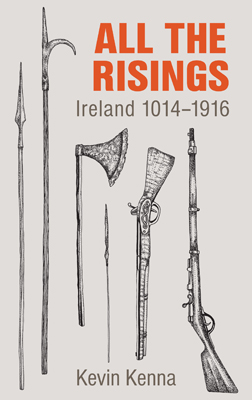With Easter soon approaching, we are celebrating the anniversary of the 1916 Rising. As well as the Easter Rising, Kevin Kenna’s All The Risings: Ireland 1014-1916 covers the eight other principal occasions in Ireland’s history on which resistance was made to the dominance of those who controlled the country’s destiny: The Battle of Clontarf, The Nine Years’ War, The 1641 Rising, The Battle of Boyne, The 1798 Rising, The 1803 Rising, The Young Ireland Rising and The Fenian Rising. All The Risings goes in depth into all of the aforementioned risings, leaving no major stones unturned. An overview of the main events, main players and impacts are included in the book, which gives an accessible, overarching view on how rebellion has shaped Ireland’s history. The section on the Easter Rising includes a summary of the main events and the main factions involved, alongside historical photographs, documents and portraits.
 The aftermath of the Easter Rising changed Ireland and the general public’s mindset shifted; once the uprising came to an end, their view changed from negativity to a recognition of the heroism that had been displayed. Kenna describes how the public perception shifted after the Rising, and how this led to the War of Independence:
The aftermath of the Easter Rising changed Ireland and the general public’s mindset shifted; once the uprising came to an end, their view changed from negativity to a recognition of the heroism that had been displayed. Kenna describes how the public perception shifted after the Rising, and how this led to the War of Independence:
“The attitude of the general public, many of whom had been disinterested, dispirited and even hostile to the rising up to now, changed quickly to admiration, and the actions of the insurgents came to be seen by many as heroic. In 1917, a young man who had fought in the GPO now emerged on the scene to a significant degree. His name was Michael Collins. In this year too, de Valera came very much to the fore when he was elected unopposed as President of Sinn Féin, the organisation into which the Irish Volunteers now merged. The threat to British rule in Ireland was not well received in Westminster, and it soon became evident that military conflict would ensue.”
If you would like to read more, All The Risings: Ireland 1014-1916 is available to buy here.
